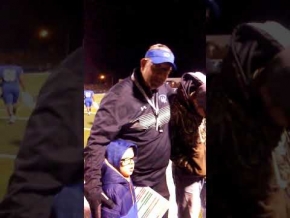Trick or Treat … another lost tradition?

Boomer Musings
By: J. Leslie Riseden
According to the American Folklife Center of the Library of Congress, most Halloween traditions can be traced to the ancient Celtic day of the dead, known as Samhain. In the ninth century, Pope Gregory III designated November 1 as a time to honor all saints and martyrs -- All Saints Day. The evening before was known as All Hallows’ Evening, when, it was believed, the souls of the dead were out and about. Food and drink were put out to placate these wandering souls, faeries and demons. In later years, observers of All Hallows’ Evening began dressing up as these scary entities. They would sing, dance and perform in exchange for food or drink, and threaten mischief if refused. This, scholars tell us, was the origin of “trick-ortreating.”
Most children of the Baby Boom era remember Halloween as a glorious “holiday,” the one that heralded the beginning of the two-month span of Halloween/Thanksgiving/Christmas/New Year’s when we had almost as many days off as in school. Scarcely had we become entrenched in the new school year than we began thinking about our Halloween costumes... cowboy, magician, caped crusader or jailbird, pirate or princess, ghost or hobo. And we didn’t just go to the store and select a complete costume off the rack -- most costumes were homemade. We had to be creative and resourceful. Discarded broomsticks became swords and magic wands; tiaras were fashioned from glitter and cardboard. (One year, my princess costume bore a striking resemblance to my Christmas pageant costume from the previous year.)
We carried a big brown grocery bag for our candy, or a pillowcase. Everybody went trick-or-treating, and everybody stayed in their own neighborhood. Oh, sure, there was always a house that was dark, and we surely would skip that one, because there was a “scary old lady” that would yell at us for trampling her garden. No matter ... we’d still fill our bags with plenty of stuff. Much of that was homemade, too. Besides the usual commercial candies, there might be caramel apples, popcorn balls, oranges, pecans or fresh-baked cookies. We gathered on the living room floor and everybody spread out their treasure, hoping to trade off those awful black jelly beans for something better.
No one ever thought about having our parents inspect our candy before we could eat it. But somehow, a story about a razor blade found in an apple spoiled everything. Snopes.com bills itself as the “definitive Internet reference source for urban legends, folklore, myths, rumors, and misinformation.” Snopes pretty much debunks the urban legends about razor blades, needles and poisons reportedly found in Halloween loot, attributing the reports to hoaxes, pranks, and misdirection. But I’ll bet most readers can name at least one person “who knows somebody that had a cousin who lived next door to someone who...”
The world we live in today has changed dramatically in the last 75 years, and long gone are the days when elementary-age children can be turned loose at dusk, unaccompanied, to run from house to house, giggling and shrieking, knocking on doors and yelling “Trick or Treat” at the top of their little sugar-fueled adrenaline-fed voices. Parents go with their kids now, and observe from the end of the driveway or walk hand-in-hand all the way up to the door. Many neighborhoods have instituted indoor Halloween parties at schools, churches and community centers. Other groups get together for private tailgate trick-or-treat parties for their kids. And some neighborhoods have just abandoned the whole tradition altogether. I can appreciate the need for such concern and vigilance. It just makes me kind of sad.
- Log in to post comments








